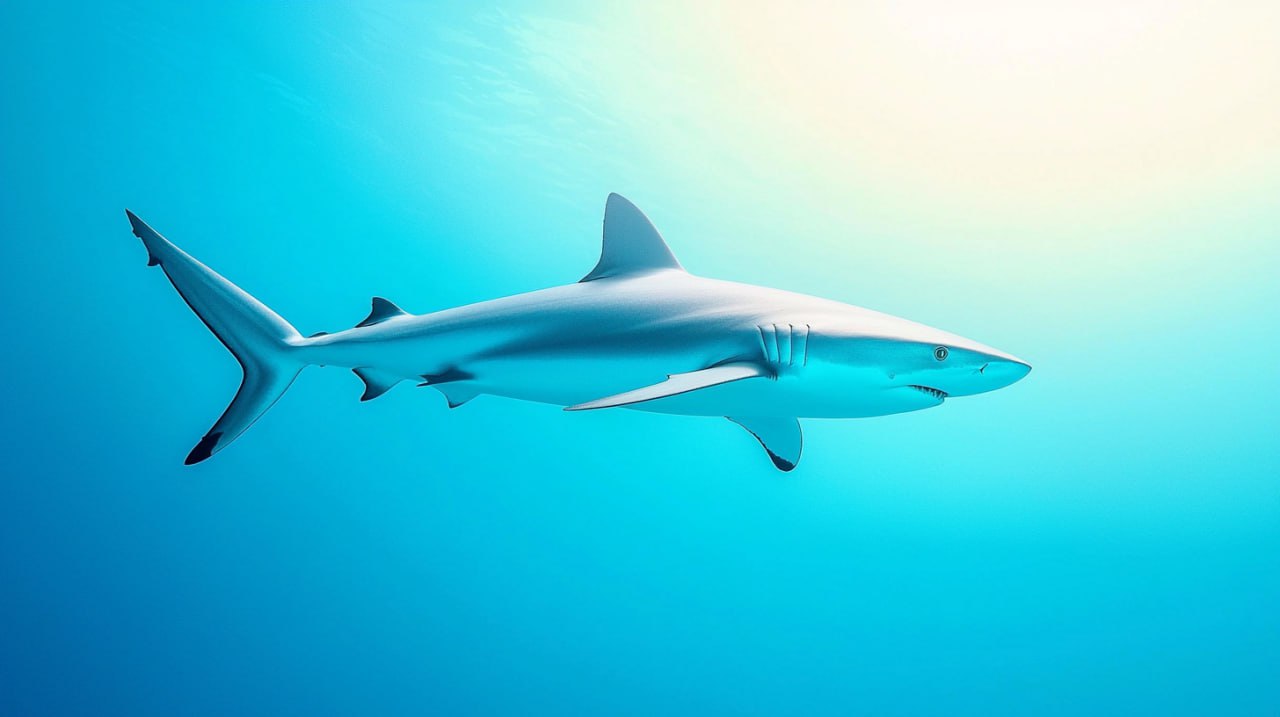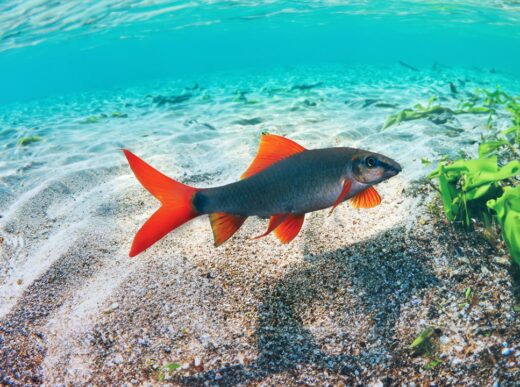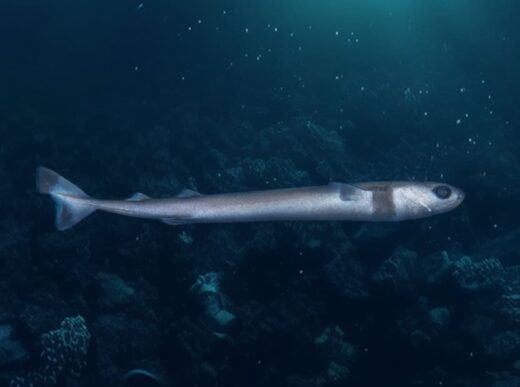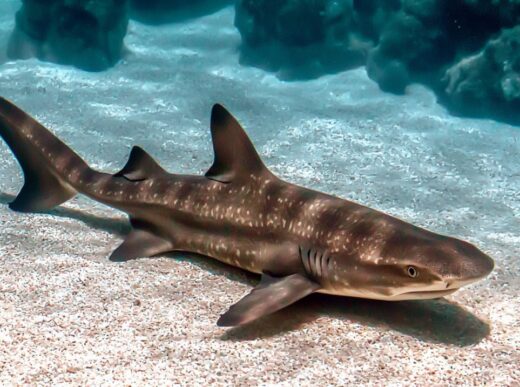Take a plunge into the ocean depths with us, and let’s uncover the fascinating world of the grey reef shark! This is quick and not-so-big predator loves to swing by the islands of the Pacific and Indian Oceans. We’ve gathered 20 cool and fun facts to give you a fresh perspective on reef sharks. Come along on this underwater journey as we dive into the secrets of these incredible and graceful ocean predators!
20 Amazing Facts About Grey Reef Sharks
Get ready for an exciting journey through the enigmatic waters ruled by sharks! Join me as we dive into the amazing world of their awe-inspiring features.
Characteristics
1. Did you know this shark goes by different names in different countries? Some call it the grey reef shark, others go for dark grey, and in some spots, it’s even known as the Indo-Pacific grey.
2. Now, scientists have given this amazing fish the official name Carcharhinus Amblyrhynchus, and get this, it translates to «Dumb Shark.» Go figure!
3. Picture your typical shark – blunt snout, toothy mouth chilling at the bottom – that’s our shark!
4, Here’s the cool part about the grey reef shark compared to its reef buddies – check out its dorsal fin. It’s got this stylish white belt, while the other fins rock a sleek black edge.
5, Size-wise, it’s your average shark. Think around 1.5 meters, but it can show off and stretch to a max of 2 meters. Impressive, huh?
6, And for the grand finale, weight class – a lightweight at just 30 kilograms! No wonder sport fishermen have their eyes on this shark; it’s like the affordable and trendy catch of the day!
Habitats
7. Now, get ready for a geography lesson! The grey reef shark likes to call the shots in the Indian and Pacific Oceans. Surprisingly, its hangout spots are limited to the islands of Indonesia, the northern shores of Australia, and the Indochina peninsula.
8. Oh, and it’s not just stopping there – this shark is like the popular kid at the party. You can spot it in the islands of Oceania, reaching as far as Hawaii. It’s basically the VIP shark in this region, slowly edging out other sharks trying to compete for the spotlight.
Lifestyle
9. Here’s a key nugget of info: The grey shark loves to chill near coral reefs and often makes appearances near the water’s surface. Typically, you’ll find this shark cruising at depths ranging from 60 to 150 meters, hanging out right at the edge of the continental shelf.
10, Brace yourself for this mind-blowing fact – these sharks are no strangers to deep-sea adventures. They can plunge to depths of over 1 kilometer! Talk about taking a dive into the unknown!
Eating Habits
11. Alright, let’s talk about the grey shark’s food preferences. It’s like a bony fish feast for them, but guess what? They won’t say no to a bit of squid, crab, or lobster action either. It’s all on the menu for these versatile eaters!
Intelligence and Social Behavior
12. Now, here’s a fun fact – the grey shark isn’t your typical lone ranger. It’s got a reputation for being quite the socialite and a bit of a curious explorer. While it does go solo on hunting missions, it’s not uncommon to spot them rolling deep in small packs, sometimes up to 25 individuals strong.
13. Here’s a quirky twist – believe it or not, these reef sharks get a bit camera-shy right next to the reefs. Instead, they prefer to play the cool kid, pushing fish flocks out into the open sea for a dining experience that’s a bit more out in the open. It’s like they’ve got a thing for underwater open spaces!
Reproduction
14. Let’s talk family matters – the grey shark is all about that egg life. The little ones hatch right there in the womb and emerge fully formed, already hitting the underwater scene at up to 60 centimeters long.
15. Now, when it comes to baby-making, grey reef shark style, it’s a bit of a waiting game. Pregnancy for these sharks can last anywhere from a decent 9 to 15 months. But here’s the twist – it’s quality over quantity. The family photo usually features a cozy crew of 1 to 4 adorable shark pups. It’s a small but close-knit family affair!
Population
16. Brace yourself for a shocker – even with their seemingly large numbers, grey reef sharks are actually on the vulnerable species list, according to scientists. The main culprits? Us humans. We’re actively hunting them for meat and barging into their homes, disrupting their habitats.
17. It’s a wild world out there, and in nature, reef sharks have a bit of a frenemy situation going on. They’re not best pals with some of their bigger counterparts, like the hammerhead shark. This rivalry is taking a toll, and the dark grey shark squad is facing a continuous decline in population. It’s a tough scene for these underwater warriors.
Danger To Humans
18. Here’s a fun twist – despite its tough appearance, this shark isn’t exactly a menace to humans. It might throw some attitude only if there’s some tempting food hanging around a swimmer. Generally, though, human-shark encounters are pretty rare. It’s like they’ve got a chill vibe when it comes to sharing the ocean.
Are There Any Aquariums with Grey Reef Shark?
19. Spotting a grey reef shark in the wild is a breeze – just head to the coral islands of the Pacific Ocean or Indonesia. It’s like their favorite hangout spot, especially close to the shore. They’re practically the ocean locals there!
20. If you’re more into an aquarium vibe, here’s a cool tidbit – these sharks are total pros at the whole captivity scene. You’ll often find them strutting their stuff in oceanariums, sharing the same space with other reef sharks. The only giveaway? Check out the fins – it’s like their version of a stylish signature!
Here are a few aquariums that may have featured Grey Reef sharks:
- Dubai Aquarium & Underwater Zoo (UAE):
- Location: Dubai, United Arab Emirates.
- Website: Dubai Aquarium & Underwater Zoo
- National Aquarium (USA):
- Location: Baltimore, Maryland, USA.
- Website: National Aquarium
- Oceanogràfic València (Spain):
- Location: Valencia, Spain.
- Website: Oceanogràfic València
- AQWA (Australia):
- Location: Perth, Western Australia.
- Website: AQWA – Aquarium of Western Australia
- Eilat Underwater Observatory (Israel):
- Location: Eilat, Israel.
- Website: Coralword
For the most accurate and up-to-date information on exhibits, including the presence of grey reef sharks, it’s advisable to check the official websites of these aquariums or contact them directly. Displayed species can change, and aquariums may introduce new exhibits or animals over time.




